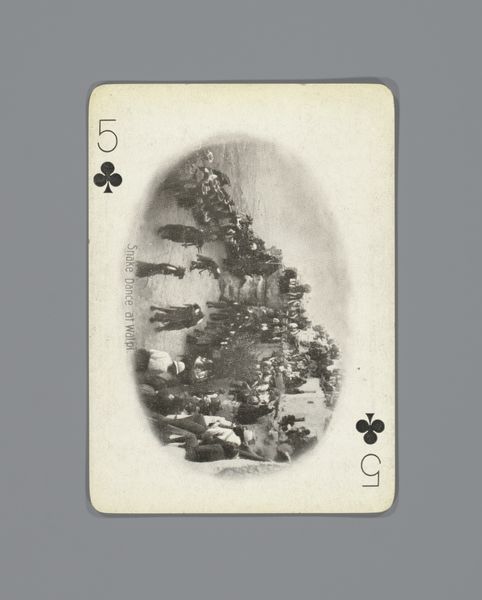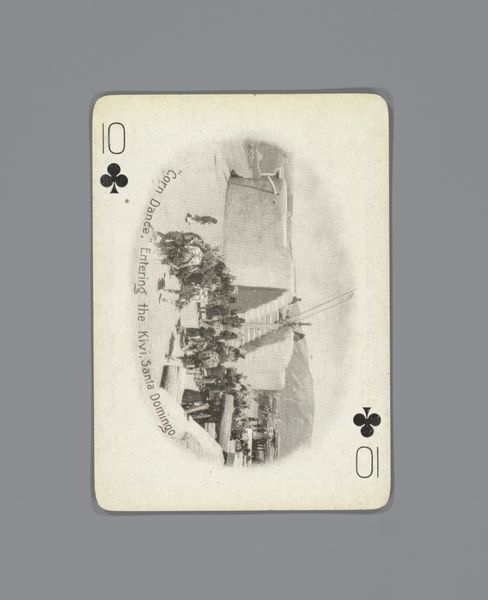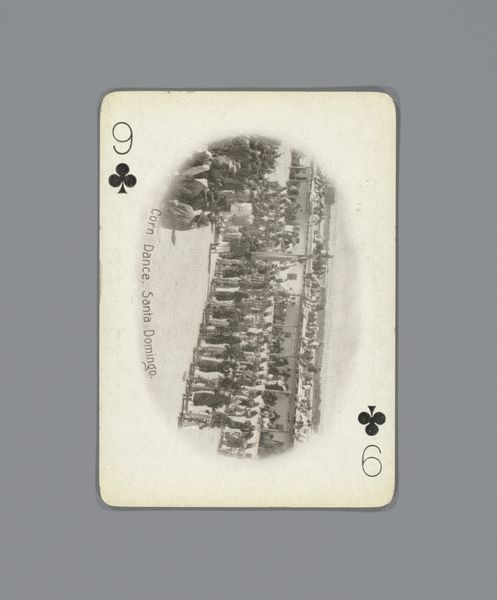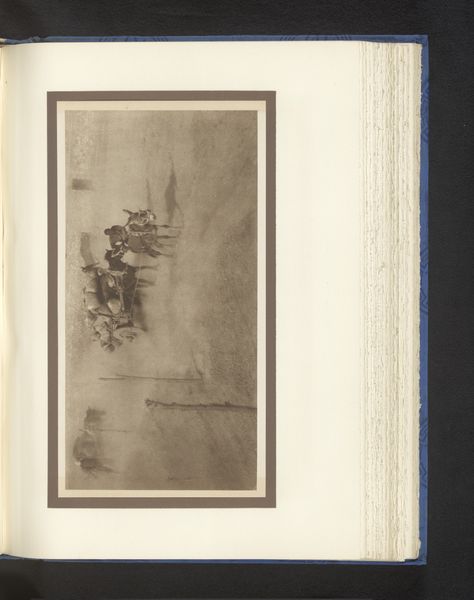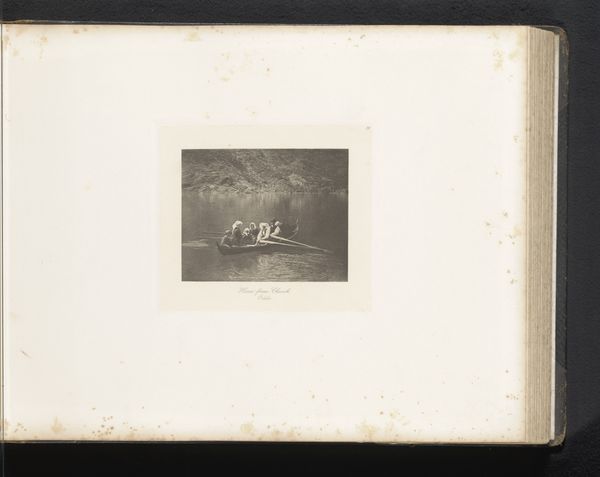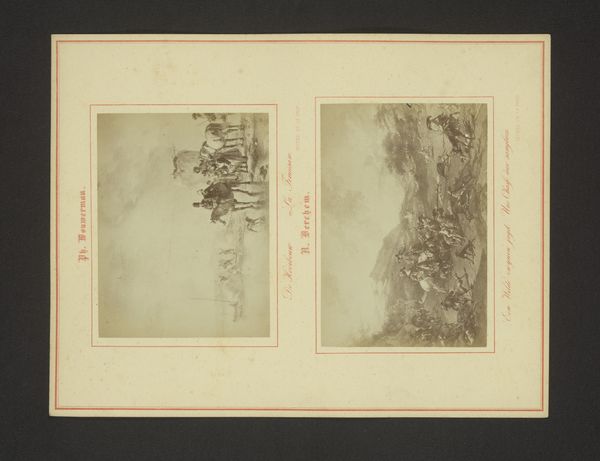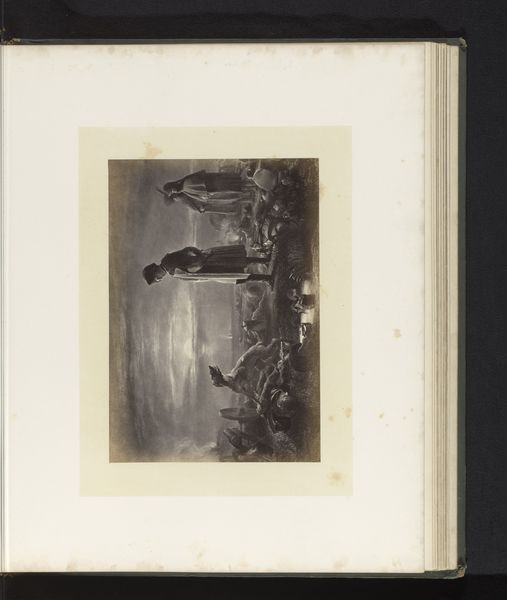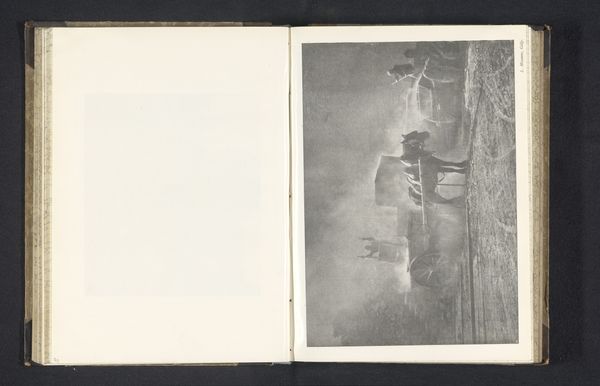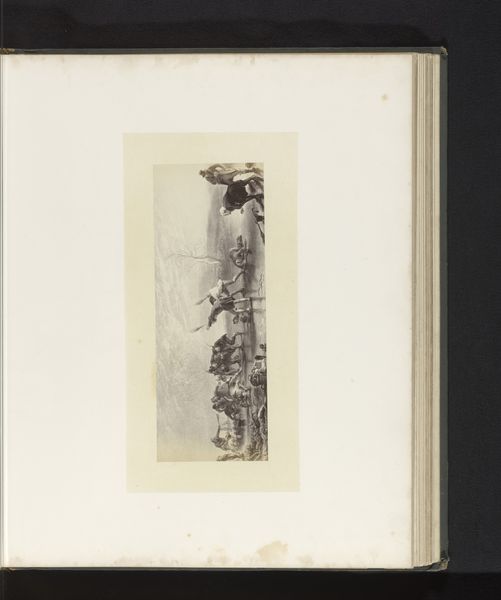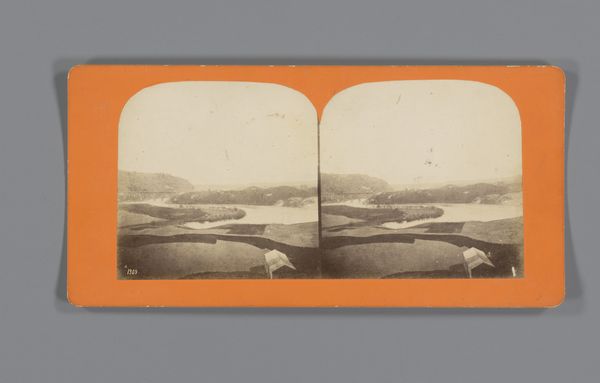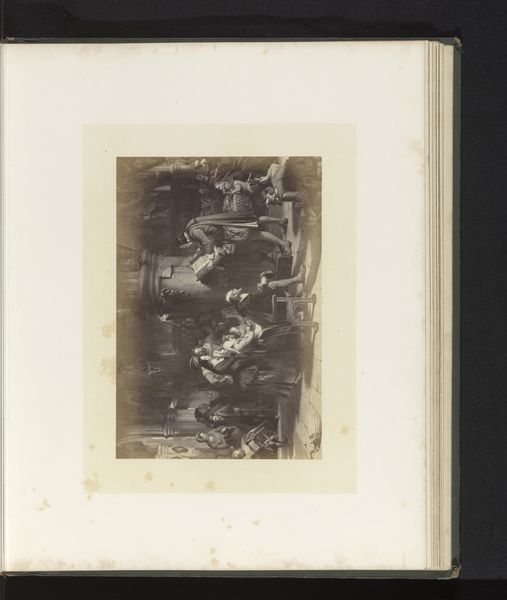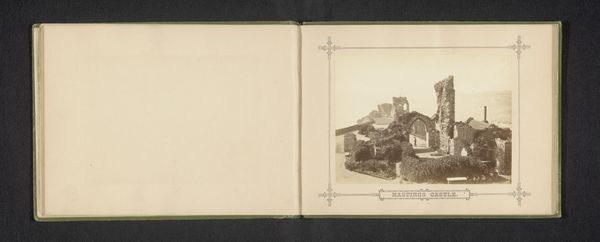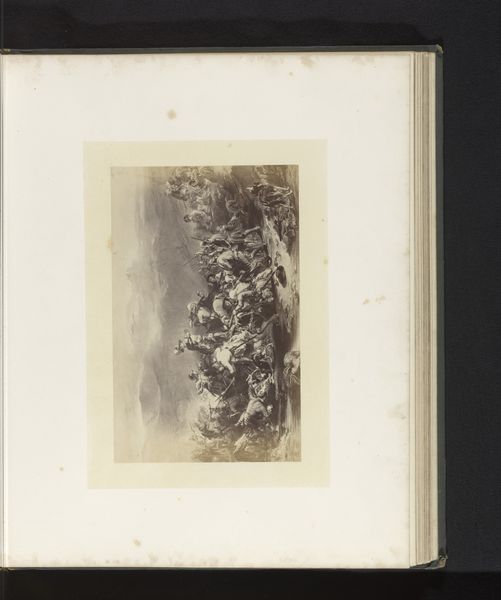
photography, gelatin-silver-print
#
landscape
#
photography
#
gelatin-silver-print
#
indigenous-americas
Dimensions: height 88 mm, width 63 mm
Copyright: Rijks Museum: Open Domain
Editor: This gelatin silver print, "Pueblo Indians Harvesting Wheat," by Adam Clark Vroman, circa 1900, feels both intimate and documentary. It captures a slice of life, but the framing…it's almost dreamlike. What stands out to you about it? Curator: The act of harvesting itself carries potent symbolism. Grain, in almost every culture, represents not just sustenance, but also cycles of life, death, and rebirth. Look at how Vroman frames this activity; he isolates it. Doesn’t that conjure a sense of timeless ritual? Almost as if he’s trying to show cultural memory embedded in their actions? Editor: That's a really interesting way to look at it! I was focused on the composition – the oval vignette, the people themselves appearing somewhat obscured. It almost feels staged, rather than purely observational. Curator: Staging doesn't negate the deeper resonance. What's compelling here is the juxtaposition: a technology like photography used to record, even perhaps aestheticize, a traditional way of life. The wheat, the harvesters - they're all carriers of something larger than themselves. Do you sense any other layers of meaning evoked here? Perhaps in the shadows? Editor: Perhaps a commentary on the changing world? Like, the very act of photographing is influencing or even threatening the tradition it's trying to capture. Curator: Exactly. Consider the power dynamics inherent in image-making, especially during that era. Whose story is being told, and how? And, what continues to endure? Editor: I see what you mean. Looking at it again, the photograph feels like it's trying to preserve something precious, something vulnerable, on the brink of disappearing, perhaps even of exploitation. Curator: Ultimately, symbols speak across time and cultures. It is why images stay with us and teach us. Editor: Definitely. This has given me a lot to think about regarding the complexities inherent in documentary photography and the weight of cultural representation.
Comments
No comments
Be the first to comment and join the conversation on the ultimate creative platform.
